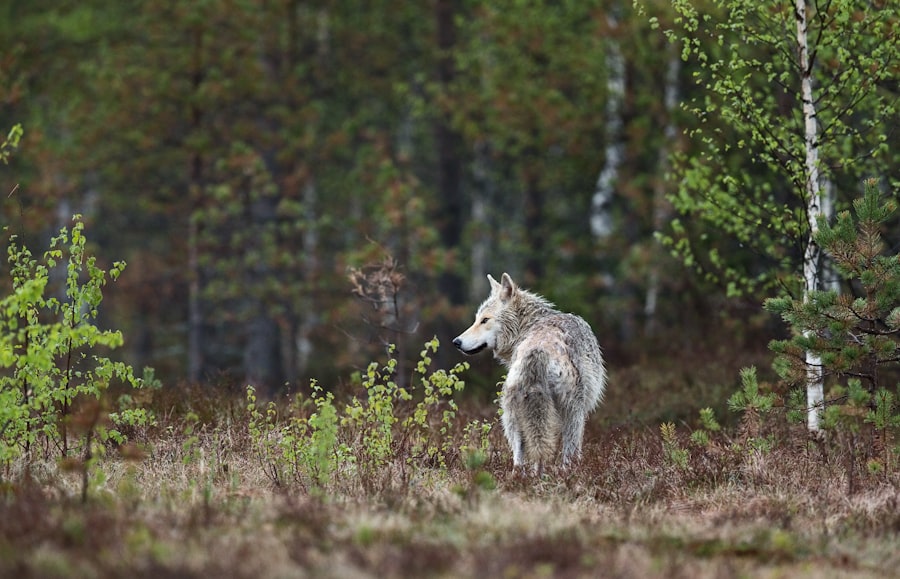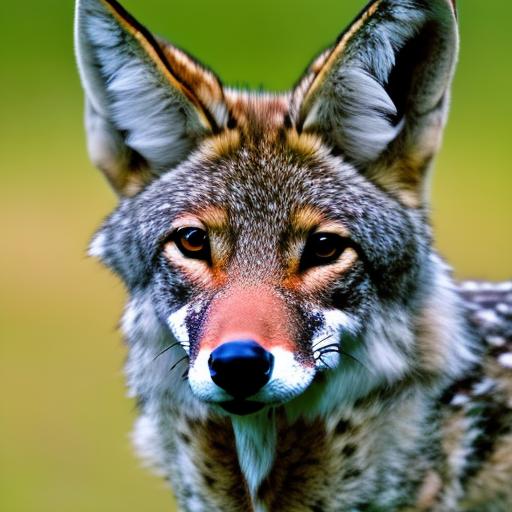Geese infestation is a common problem that many property owners face, especially those who live near bodies of water or open fields. While geese may seem harmless, their presence can cause significant issues for people and their properties. These large birds can leave behind droppings that not only create an unsightly mess but also pose health risks to humans and pets. Additionally, geese can be aggressive and territorial, posing a threat to individuals who come too close to their nesting areas.
Key Takeaways
- Geese infestation is a common problem that can cause damage to property and pose health risks.
- Traditional methods of geese control, such as physical barriers and chemical repellents, have drawbacks and may not be effective in the long term.
- Using a fake coyote is a safe and humane way to deter geese from your property.
- A fake coyote works by mimicking the presence of a predator, which scares geese away.
- When choosing and placing a fake coyote, it is important to consider factors such as size, location, and maintenance.
The Importance of Keeping Geese Away
Keeping geese away from your property is crucial for several reasons. Firstly, the droppings left by geese can carry harmful bacteria such as E. coli and Salmonella, which can contaminate water sources and pose a risk to human health. Ingesting or coming into contact with these bacteria can lead to illnesses such as diarrhea, vomiting, and even more severe conditions in individuals with weakened immune systems.
Furthermore, geese can cause damage to properties by trampling on lawns, gardens, and crops. Their constant grazing can destroy vegetation and leave behind bare patches of land. This not only affects the aesthetic appeal of the property but also reduces its value. Geese can also be noisy, especially during their mating season, which can disrupt the peace and tranquility of residential areas.
Traditional Methods of Geese Control
In an attempt to control geese populations and keep them away from their properties, many people have resorted to traditional methods of geese control. These methods include scare tactics, physical barriers, and chemical repellents.
Scare tactics involve using visual or auditory stimuli to frighten geese and deter them from settling in a particular area. This can include using scarecrows, reflective tape, or even trained dogs to create a sense of danger for the geese. Physical barriers such as fences, netting, or hedges can also be used to prevent geese from accessing certain areas. Lastly, chemical repellents can be applied to lawns or vegetation to make them less appealing to geese.
The Drawbacks of Traditional Geese Control Methods
While traditional methods of geese control may provide temporary relief, they often come with several drawbacks. Firstly, these methods can be expensive to implement and maintain. Scare tactics may require constant monitoring and adjustment to remain effective, while physical barriers may need regular repairs or replacements. Chemical repellents can also be costly and may require frequent reapplication.
Moreover, traditional geese control methods may have negative impacts on the environment. Chemical repellents can harm other wildlife and pollute water sources if not used correctly. Physical barriers such as fences or netting can disrupt the natural movement of animals and hinder the growth of vegetation. Additionally, scare tactics that involve the use of trained dogs may pose a risk to both the geese and the dogs themselves.
The Benefits of Using a Fake Coyote to Keep Geese Away
A more effective and affordable solution to geese control is the use of a fake coyote. A fake coyote is a life-sized replica of a coyote that is strategically placed in areas where geese are unwanted. This method capitalizes on the natural fear that geese have towards their predators and uses it to deter them from settling in a particular area.
How a Fake Coyote Works to Deter Geese

A fake coyote works by mimicking the natural predator of geese, creating a sense of danger that prompts them to avoid the area. The realistic appearance of the fake coyote, combined with its lifelike movements and positioning, creates an illusion that there is an actual threat present. Geese are instinctively wary of predators and will typically avoid areas where they sense danger.
Choosing the Right Fake Coyote for Your Property
When choosing a fake coyote for your property, it is essential to consider factors such as property size, location, and the severity of the geese infestation. Larger properties may require multiple fake coyotes strategically placed to cover a larger area effectively. The location of the property, such as proximity to water sources or open fields, should also be taken into account when determining the number and placement of fake coyotes.
Best Practices for Placing and Maintaining a Fake Coyote
To ensure the effectiveness of a fake coyote in deterring geese, proper placement and maintenance are crucial. The fake coyote should be positioned in areas where geese are likely to congregate or attempt to settle, such as near bodies of water or open fields. It is important to periodically move the fake coyote to prevent geese from becoming accustomed to its presence.
Regular cleaning of the fake coyote is also necessary to maintain its realistic appearance. Dust, dirt, and debris can accumulate on the surface of the replica, diminishing its effectiveness in scaring away geese. Additionally, occasional relocation of the fake coyote can help prevent geese from adapting to its presence and becoming desensitized.
Other Ways to Complement a Fake Coyote in Geese Control
While a fake coyote can be an effective geese control solution on its own, there are other methods that can be used to complement its effectiveness. Decoys such as plastic owls or herons can be placed near the fake coyote to create a more realistic and intimidating environment for geese. Sound devices that emit distress calls or predator sounds can also be used to further deter geese from settling in an area.
Natural landscaping techniques can also be employed to discourage geese from congregating on a property. Planting tall grasses or shrubs near bodies of water can create barriers that make it difficult for geese to access the area. Additionally, creating a diverse and dense vegetation cover can make the property less appealing to geese, as they prefer open spaces where they can easily spot potential predators.
The Effectiveness of a Fake Coyote in Keeping Geese Away
In conclusion, geese infestation can be a significant problem for property owners, but there are effective solutions available. Traditional methods of geese control may have limitations and drawbacks, but the use of a fake coyote offers a more affordable and efficient solution. By mimicking the natural predator of geese, a fake coyote can effectively deter them from settling on a property. When combined with other complementary methods, such as decoys, sound devices, or natural landscaping, the effectiveness of a fake coyote in keeping geese away is further enhanced.
Looking for effective ways to protect your chickens from predators? Check out this informative article on the Poultry Wizard website that discusses the benefits of using a fake coyote to keep geese away from your chicken coop. Discover how this simple yet ingenious method can help deter geese and ensure the safety of your feathered friends. For more insights on chicken coop maintenance and predator prevention, be sure to explore other helpful articles such as “Chicken Coop Portage” and “Chicken Coop Door Size” on the Poultry Wizard website.
Meet Walter, the feathered-friend fanatic of Florida! Nestled in the sunshine state, Walter struts through life with his feathered companions, clucking his way to happiness. With a coop that’s fancier than a five-star hotel, he’s the Don Juan of the chicken world. When he’s not teaching his hens to do the cha-cha, you’ll find him in a heated debate with his prized rooster, Sir Clucks-a-Lot. Walter’s poultry passion is no yolk; he’s the sunny-side-up guy you never knew you needed in your flock of friends!







